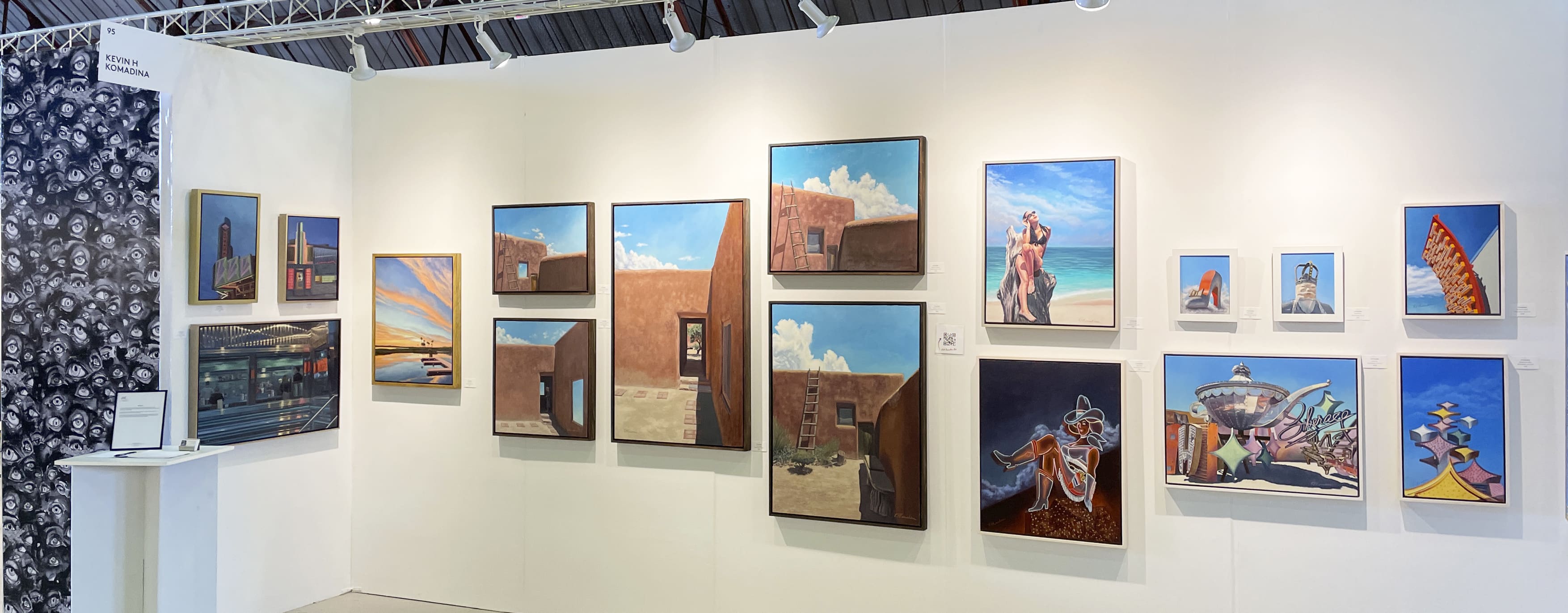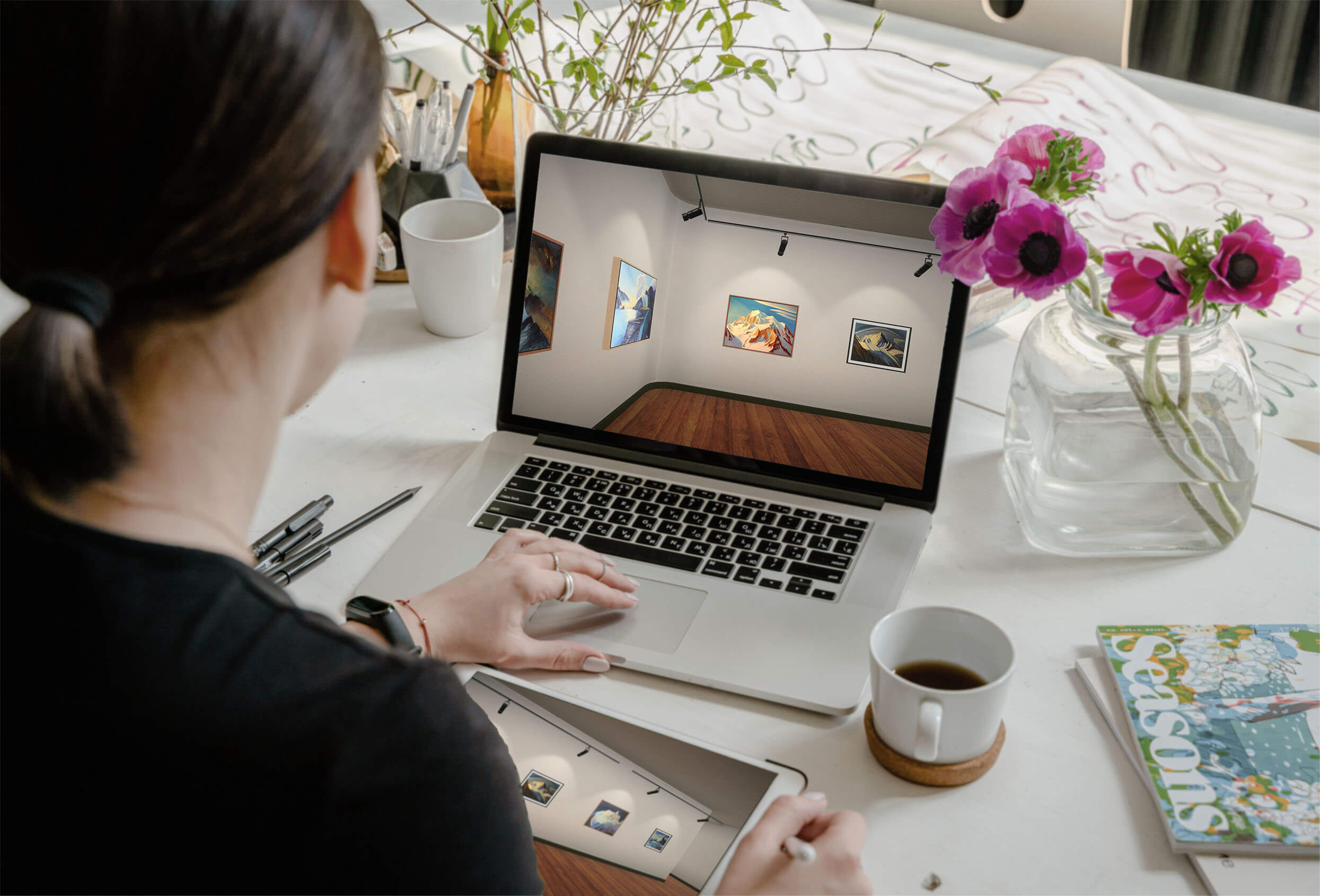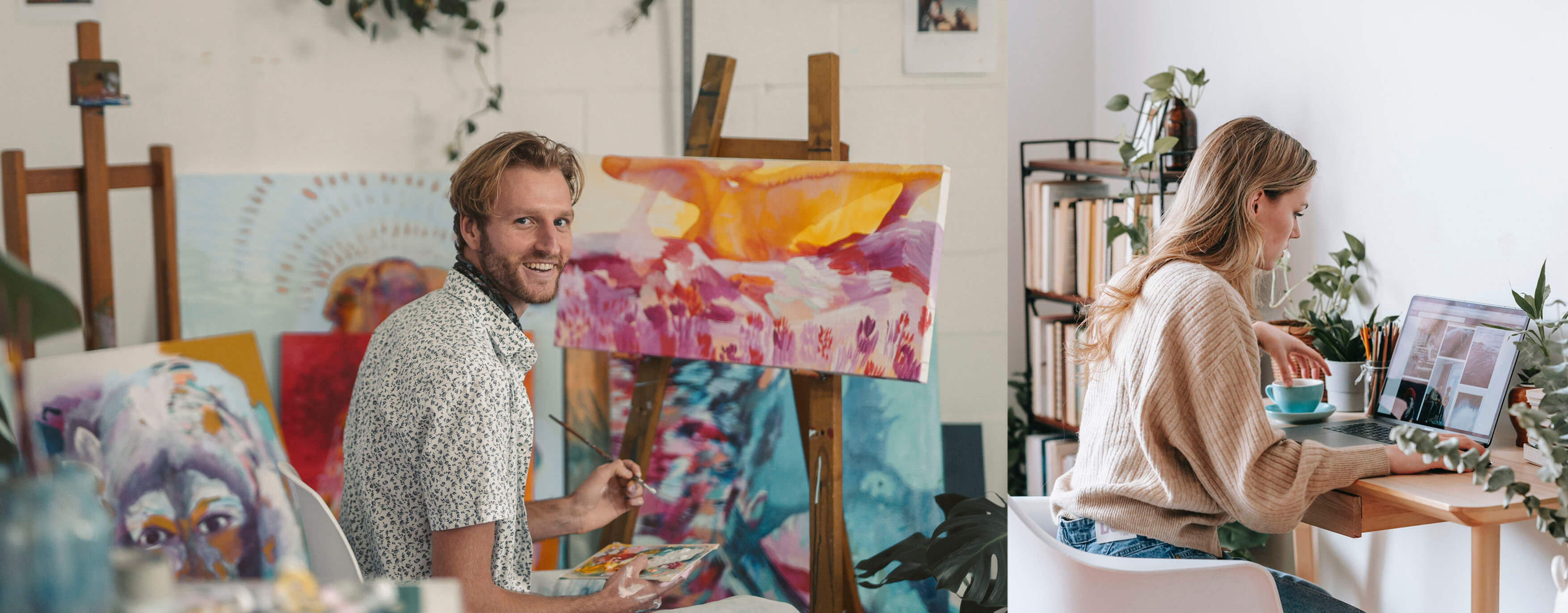Planning an art exhibition is an exciting challenge for galleries and for artists. It calls for a perfect mix of planning, creativity, handling of resources, communication strategies, and, of course, working with art pieces to showcase them in the best way possible.
If you have already started the process of planning an art exhibition or you are still in the early stages of a possible in-situ art show, follow these steps to plan it and learn how to integrate a digital tool to curate your art exhibition in advance saving time and money, while also preventing unnecessary handling of the artwork.
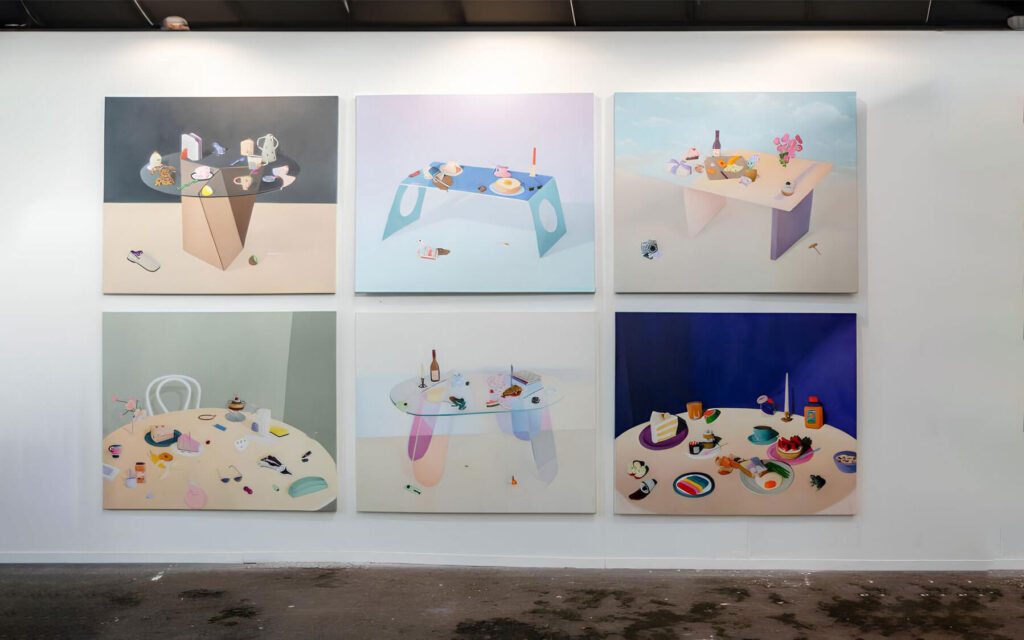
Planning an Art Exhibition is an exciting process that requires detailed previous organization.
Contents
6 Steps to follow to plan an in situ Art Show or Exhibition
From an intimate art show to the traditional art fair booth and the big gallery or museum exhibitions, all art exhibitions have the same idea at heart: creating a space where art lovers, collectors, artists, and connoisseurs can interact with a certain group of art pieces, share the experience and connect through it.
Coming up with the right set of art pieces to show, defining the layout, creating an atmosphere, and even inviting people to the event, everything has a time and place in the organization process of an art exhibit. The important thing is: you can’t miss a step!
Follow this checklist and make sure you are taking care of every detail in the planning of your art exhibition:
- Choose the right event or art fair.
- Select the artworks that are going to be shown: is there a common theme or subject? How do these pieces interact with each other? Curating your exhibition is the base of the whole show.
- Define the layout of the artwork in the provided space: think about the atmosphere you want to create, the harmony between the pieces, and the experience you want the visitor to have. Give yourself the time to play around with the layout and find the perfect spot for each piece with ArtPlacer’s Art Show Planner.
- Plan the logistics: an art show involves a lot of careful and detailed art handling, from framing and hanging pieces to making, this is a particular point in the planning process where you can save time and resources by making smart use of the space and defining a good layout.
- Make a press release: write a statement and reach out to media outlets, invite journalists and art critics
- Promote the event: let people know the show is happening, get your online audience involved, create an online promotional strategy, and, also, think about the possibility of making the exhibition a hybrid experience and how some simple digital integration can enrich it. You can also, create a brochure of the event and think about printables or any other information visitors might want to have access to.
If you want to learn more about this subject, watch the exclusive webinar “Where and how to exhibit: Places and Presentation with Gita Joshi” over at ArtPlacer Academy. Log in to your ArtPlacer account or start your free trial to access it.
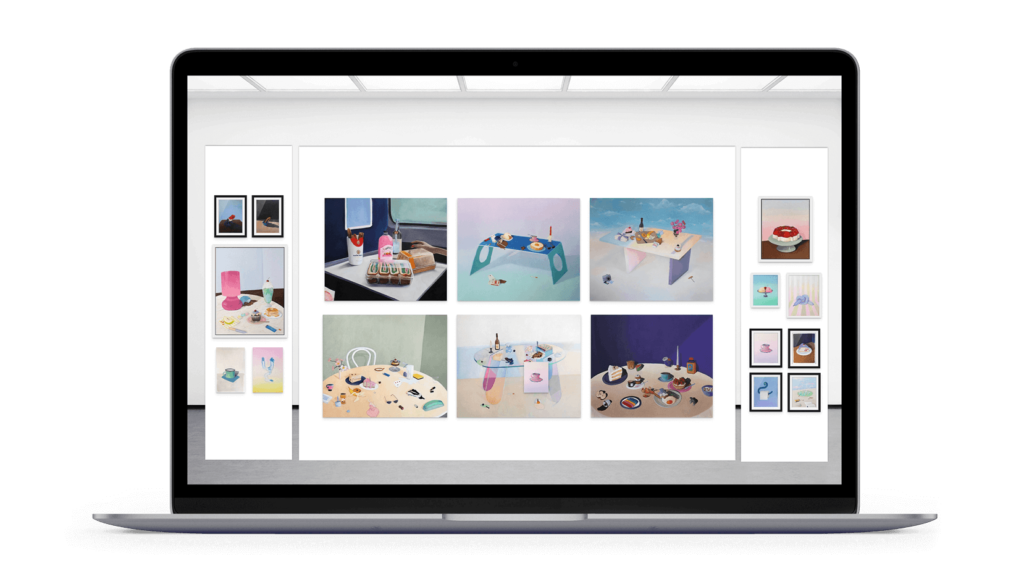
Digital tools like ArtPlacer’s Art Show Planner help galleries save resources by enabling them to create the layout on a scale-accurate space.
Choose the right display to showcase your art
Planning an in-situ art show doesn’t have to be a time and resource-consuming task. The process is now seamless and efficient with tools like ArtPlacer’s Art Show Planner. Here’s how you can use this tool to plan your art shows in advance:
1.Define Your Space
Accurately replicate the walls of your gallery or booth by entering the height and width of each wall. This ensures that the digital layout matches the real-life space.
2.Lay Out Your Artworks
Drag and drop your artworks into the digital walls. The Art Show Planner will show them at scale, providing a realistic exhibition preview.
Adjusting the brightness, shadows, and contrast of the artworks enhances its visual appeal and creates a realistic-looking blueprint.Create custom frames that mirror those you will use in real life, or choose from pre-made options. Use the smart guides and position tools to align and distribute the artworks with a visually striking layout that will capture collector’s attention.
3.Creating an Inviting Art Fair Stand
Your stand should be a welcoming space that feels open and accessible, even during the busy moments of the fair. It’s important to avoid overcrowding your stand and to curate it thoughtfully, leaving enough white space between artworks.
This approach enhances the visual appeal and helps boost gallery sales, as individual pieces stand out more effectively. Cluttered stands can make it difficult for visitors to appreciate each work of art. Remember these principles for curating an inviting and engaging art show stand:
-It should be minimalist and not too crowded.
-Go easy on the eyes.
-Create something that is visually digestible.
4.Save and Share Your Blueprint
Once your layout is ready, save the project. You can download the blueprint for printing or share it with your team and art fair organizers via email or social media messaging apps. This digital layout serves as a clear and detailed blueprint to help you set up the exhibition.
5.Bring Your Show to Life
On the day of the event, use the blueprint to set up the exhibition efficiently. This ensures a smooth and stress-free setup.
If you want to learn more about this subject, watch the exclusive webinar “Where and how to exhibit: Places and Presentation with Gita Joshi” over at ArtPlacer Academy. Log in to your ArtPlacer account or start your free trial to access it.
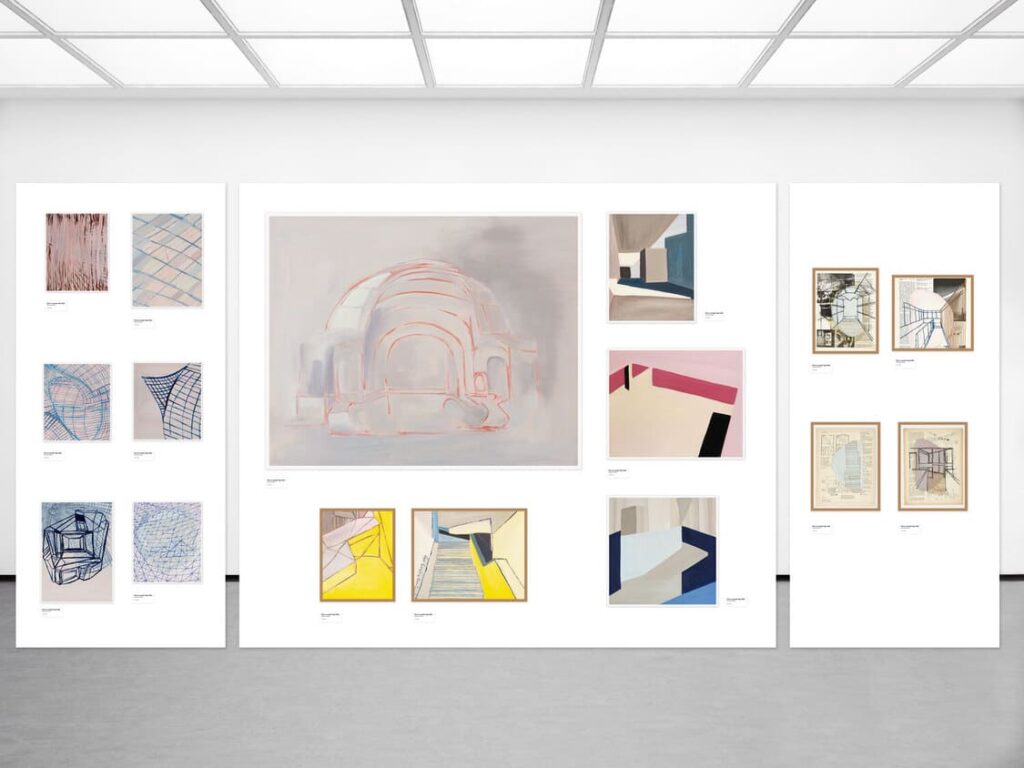
With ArtPlacer’s Art Show Planner, gallerists and artists can create the layout of an exhibition in advance.
Tools to plan an Art Exhibition successfully
Organization is key to planning a successful art exhibition. Many digital tools can help at each step, from automation platforms for email marketing campaigns to apps that help you schedule and target social media content to reach potential customers.
But that’s not the only way digital tools can help you plan an art exhibition successfully. An art show implies the handling of numerous art pieces and the potential risk of mishandling and damaging the work.
ArtPlacer’s Art Show Planner is a new solution to an old problem. This tool enables artists and gallerists to design the layout of an exhibition in a digital space that mimics an art fair booth, where they can place the selected artwork in its correct height and width. A process that once was time-consuming and done by mixing several resources like photos, image editors, sketches, and in-situ measurement of the space, can now be solved with a few clicks, with a single tool with integrated sharing options.
Lindsay Hamm, Director of Curation and Acquisitions of West Chelsea Contemporary explains it in this way: “As a national contemporary art gallery with locations in New York and Austin, we use ArtPlacer to layout our exhibitions proactively (…). My favorite feature is the ability to build your own walls, an easy way to layout the various art fairs we attend throughout the year.”
Give it a try and make the best of each exhibition opportunity. Get the Art Marketing tools you need today. Log in to your ArtPlacer account or start your free trial today.
